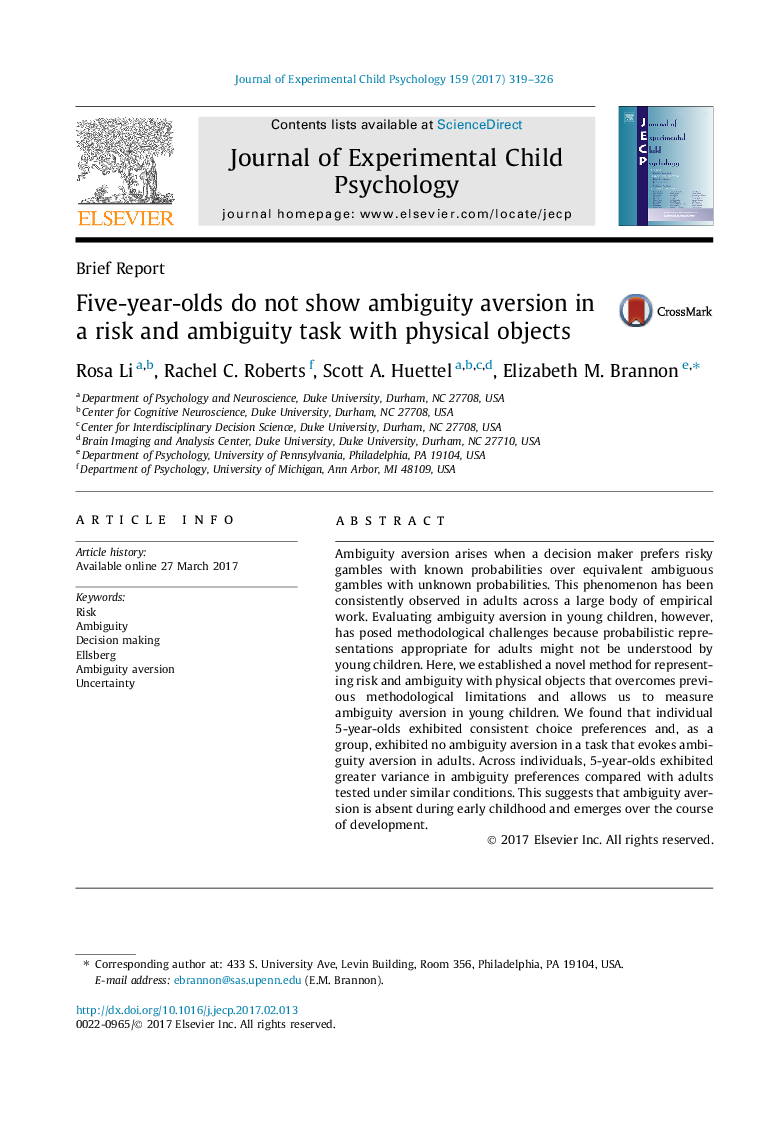| Article ID | Journal | Published Year | Pages | File Type |
|---|---|---|---|---|
| 5039996 | Journal of Experimental Child Psychology | 2017 | 8 Pages |
â¢Five-year-old children make consistent choices about risk and ambiguity.â¢As a group, five-year-old children do not exhibit ambiguity aversion in a task that evokes ambiguity aversion in adults.â¢Across individuals, five-year-olds exhibit greater variance in risk and ambiguity preferences compared to adults.
Ambiguity aversion arises when a decision maker prefers risky gambles with known probabilities over equivalent ambiguous gambles with unknown probabilities. This phenomenon has been consistently observed in adults across a large body of empirical work. Evaluating ambiguity aversion in young children, however, has posed methodological challenges because probabilistic representations appropriate for adults might not be understood by young children. Here, we established a novel method for representing risk and ambiguity with physical objects that overcomes previous methodological limitations and allows us to measure ambiguity aversion in young children. We found that individual 5-year-olds exhibited consistent choice preferences and, as a group, exhibited no ambiguity aversion in a task that evokes ambiguity aversion in adults. Across individuals, 5-year-olds exhibited greater variance in ambiguity preferences compared with adults tested under similar conditions. This suggests that ambiguity aversion is absent during early childhood and emerges over the course of development.
